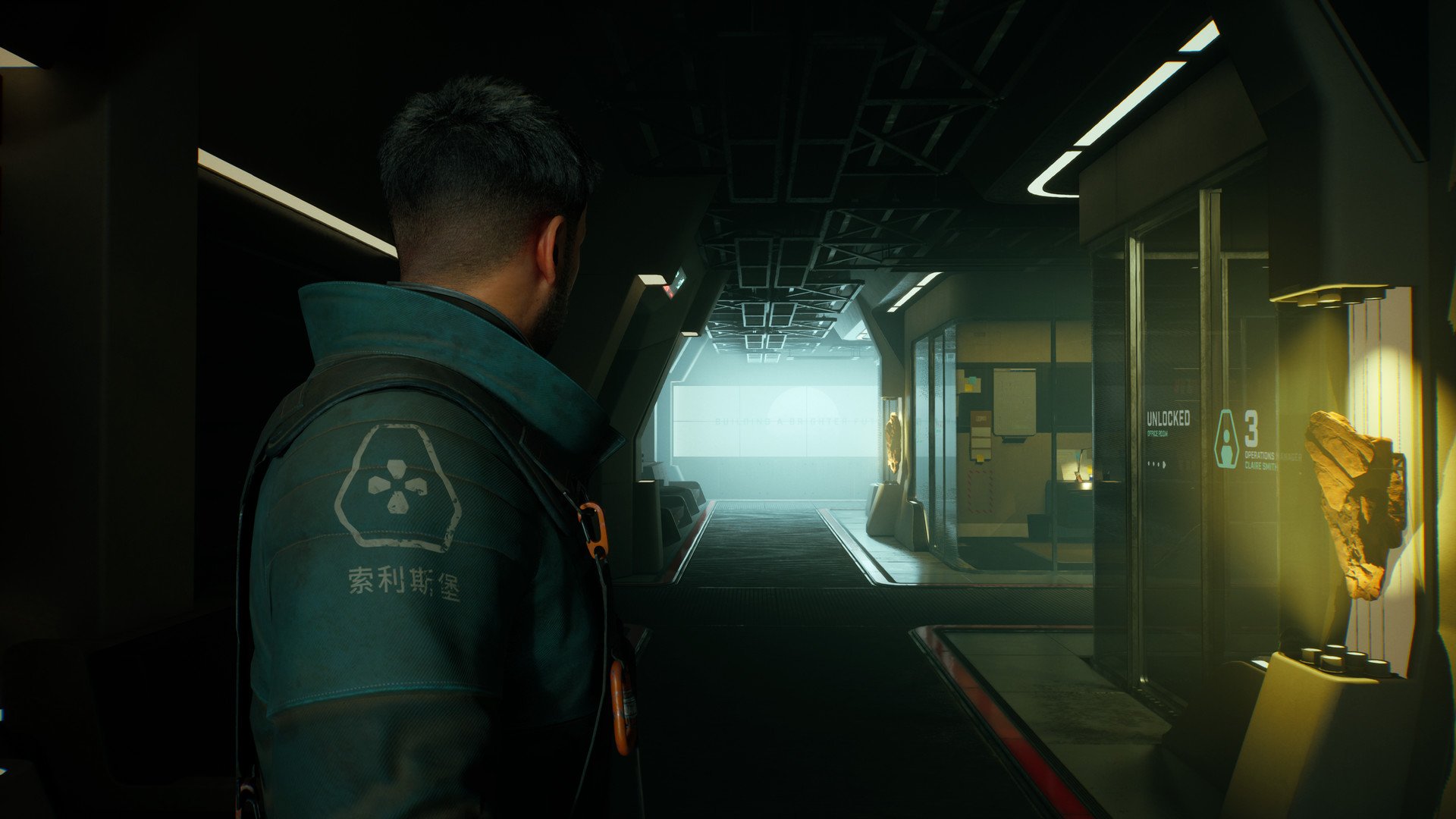REVIEW - Fort Solis is an engaging and polished first effort
Straight and steady, Mr. Spaceman.
By Jonathan Garrett
22/08/23
Reviewed on PS5.
Review copy provided by Fallen Leaf.
Fort Solis is a curious and immediately arresting proposition. It's a slow burn third person narrative with a very deliberate pace and outstanding voice cast. The focus here is on poking around for story nuggets and light puzzle solving. There is a limited selection of quick time events at key moments, but the control scheme remains minimal. You won't be carefully managing an inventory of supplies, or levelling up to unlock new abilities. There's no combat (in the traditional, expected sense) or upgradeable character abilities. Fort Solis is an Unreal Engine 5 powered mystery thriller that's more akin to Firewatch than Dead Space.
Much like Campo Santo's seminal effort, the aim of the game here is a gradual peeling back of the curtain to unveil the stakes at play. This is potentially the biggest bone of contention that some of you may face, as your mileage with titles like this will be entirely dependant on your fondness or disdain for “walking simulators”. A phrase which we detest, but nevertheless walking does make up a large chunk of what you’ll be doing. Reading e-mails, interacting with the environment, watching video logs, and finding a way through to the next section of the outpost take precedence over neutralising overt threats.
That’s not to say that Fort Solis lacks engaging material or surprising moments; there is palpable tension during a particular sequence in Chapter 3 that we won’t spoil here. The interaction between the two characters involved, and the execution of their performance capture, is top tier. The biggest issue we faced is the narrative disconnect that sometimes happens when you feel a sense of urgency but there’s no sprint button. Even a light jog would have been ideal. It ends up generating an entirely avoidable sense of frustration when you’re keen to push forward but are forced to walk at a fixed speed.
The revisiting of previous areas, and the occasional non player controlled running segment, exacerbates this problem. The intention is clearly to let the atmosphere sink in and wrestle greater control over the flow of action, but instead you’re left wondering why that crawl space was quite so lengthy. It’s a specific stylistic choice that works right before a big reveal, but not during average traversal. When it gets so much right (the integrated map on your character model, the sound design, the visuals), it’s a strange misstep.
Despite the above, Fort Solis had its hooks in me from start to finish. The three main stars (Roger Clark, Julia Brown, and Troy Baker) deliver naturalistic and controlled performances; Clark is clearly relishing the chance to portray a less gruff protagonist alongside Brown’s sardonic but supportive companion. Baker’s subdued and selectively unhinged foil makes for a well directed contrast with genuine menace.
Unreal Engine 5 has been leveraged to great effect here, with crisp animation and some striking graphics. We did encounter a few visual glitches, but a Day 1 patch is scheduled to address said wonkiness. This is an appropriately priced, condensed adventure that you can box off in approximately four to five hours, and a welcome antidote to 60+ hour behemoths.
Remember: check e-mails for narrative nugs.
WORTH IT?
At the bottom of every game review, we ask the question: Worth it? And the answer is either “Yeah!” or “Nah”, followed by a comment that sums up how we feel. In order to provide more information, we also have “And” or “But”, which follows up our rating with further clarification, additional context for a game we love, or perhaps a redeeming quality for a game we didn’t like.
YEAH!
Fort Solis is a tightly produced and well directed narrative adventure that will hold your interest.
BUT
The pacing and lack of sprint will be off putting to players wanting to truly connect with the urgency of key moments.
TARPS?
At the bottom of some of our articles, you’ll see a series of absurd looking images (with equally stupid, in joke laden names). These are the TARP badges, which represent our ‘Totally Accurate Rating Platform’. They allow us to identify specific things, recognise positive or negative aspects of a games design, and generally indulge our consistent silliness with some visual tomfoolery.






